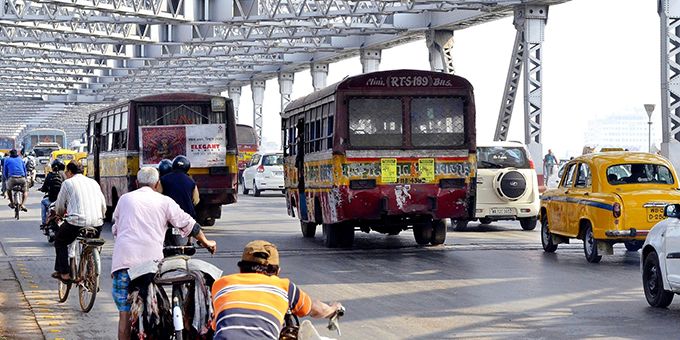Now, with concerns over China’s handling of the virus, rising labor costs across the developing world and apprehension about geographically concentrated supply chains, companies are placing bets on the next hotspot for affordable manufacturing services.
 Will India Be the Next Giant of Manufacturing?
Will India Be the Next Giant of Manufacturing?

Caleb Danziger, Tech Writer | The Byte Beat
Thailand, Vietnam and India are all frontrunners in this push to diversify the global manufacturing apparatus. Several major companies are looking to India as China’s heir apparent, which could see India taking on new importance in the worldwide supply chain.
Why the so-called manufacturer “flight” from China? What should India do now to seize the moment?
Why Are Companies Moving Away From China?
Do you want a sense of how much manufacturing is on the table? Consider that, of every dollar Americans spend on clothing, 35 cents’ worth comes from Chinese imports.
Additionally, half of the world’s LCD shipments come from China. This gives the country a disproportionate presence in computer, smartphone, television, automotive, health care and many other industries that rely on LCD panels.
In addition to the axiom about keeping all one’s eggs in the same basket, there are several other reasons why companies are rethinking their close ties with China and the factories they’ve offshored there.
The first is labor costs. China became the “world’s factory” because it offered robust manufacturing and distribution infrastructure, along with inexpensive labor. Now, wages across the industrial sector are on the upswing in China, meaning one less competitive advantage for the nation and one less reason for companies to invest in a presence there.
The second factor is political pressure — namely, the ongoing trade war between China and the United States. New tariffs and the threat of more in the future introduces an element of risk that didn’t exist before. Companies are looking to new beachheads for their manufacturing wings that aren’t as heavily targeted by protective economic mechanisms.
The third factor is economic pressure. Financial incentives from other countries are only further encouraging the flight of manufacturers from Chinese shores. Japan is courting manufacturers by pledging $2.2 billion in government assistance to help companies relocate from China.
Additionally, U.S. officials support the creation of a so-called “economic prosperity network” that, while conspicuously omitting China, could reorder entire supply chains in Australia, New Zealand, Japan, Vietnam, South Korea and India. India’s Prime Minister, Narendra Modi, supports this reorganization, saying this is the “hour that India should play a big role in the global supply chain.”
India is one of these new beachheads that companies are looking for in the wake of labor market shakeups, global pandemics and the threat of never-ending trade disputes. With a deliberate response to the rapidly evolving conditions on the ground in China and throughout the world, India might very well inherit China’s mantle of “world’s factory.”
What India Must Do to Seize the Moment
Why is Apple Inc. moving the supply chains and manufacturing infrastructure for $40 billion worth of smartphones, or one-fifth of its entire manufacturing wing?
Why, of the 56 countries that moved manufacturing facilities out of China between April 2018 and August 2019, did three choose India and almost half choose Vietnam?
In a nutshell, it’s because India, Vietnam, Thailand and other countries are creating more favorable business environments than their manufacturing partners enjoyed in China. India’s “production-linked incentive scheme” — an award of up to 6% for companies producing goods in India — is a deliberate move to capture some of the manufacturing traffic leaving Chinese shores.
Financial incentives likely won’t be enough for India to capture as much potential business as it can, however.
Brookings scholars Darrell M. West and Christian Lansang released a report in July 2018 ranking major nations by their global manufacturing competitiveness. The report gives top marks to the U.K., Switzerland, the U.S., Japan and Canada due to business-friendly tax and other policies, the cost of doing business, rate of innovation, and infrastructure and workforce investments.
Less favorably ranked were countries like Brazil, Indonesia, Mexico, Russia and India. The cited reasons included relatively lower investments in infrastructure and education, as well as lackluster tax policies.
The Brookings Institute provides some general takeaways in the report for countries that want to attract larger numbers of companies by improving their manufacturing environments. These include:
1. Politics
Countries should adopt political strategies that encourage open trade and provide economic predictability for companies looking to establish a new manufacturing presence.
2. Financial Support
Another way to encourage businesses to relocate is by offering financial support, including grants and tax credits, in exchange for making local workforce and innovation investments.
3. Regulatory Environment
The regulatory environment must do two things to attract outside investment. First, it must insist on transparency and disincentivize corruption to ensure fair worker treatment. Second, it must hold manufacturers to higher standards for cleanliness and operational sustainability to provide quality products and reputational consistency.
4. Infrastructure and Education Investments
If India and other countries want to bring more manufacturers aboard, they need to make the proper investments in workforce development, education and infrastructure.
In terms of infrastructure, it’s hard to understate the importance of reliable, high-quality seaports and airports, roads, power delivery systems, and high-speed broadband and mobile internet. All these are vital when it comes to attracting business investment.
Can India Seize Its Momentum?
As of late April, as COVID-19 continued to grip the world, an estimated 1,000 foreign companies were engaged in active discussions with the Indian government regarding mobile phone, medical, textile, and other consumer manufacturing production plans.
Apple, Hasbro and Black & Decker are just some of the household names moving on from China to seek manufacturing opportunities elsewhere. Intel is considering a similar move, and there will likely be other departures before COVID-19 abates.
In the meantime, countries should do everything they can to reinvest in their people and their workforces. They should focus on their channels for innovation, like education and infrastructure, to encourage foreign investment.
The content & opinions in this article are the author’s and do not necessarily represent the views of ManufacturingTomorrow
Comments (0)
This post does not have any comments. Be the first to leave a comment below.
Featured Product

